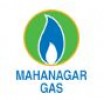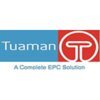Assistant Project Manager
90+ Assistant Project Manager Interview Questions and Answers

Asked in Uflex

Q. What are the different phases in new product development?
The different phases in new product development include ideation, concept development, design, testing, production, and launch.
Ideation: Generating and exploring ideas for new products.
Concept Development: Developing and refining the chosen idea into a viable concept.
Design: Creating detailed designs and specifications for the product.
Testing: Conducting various tests to ensure the product meets quality standards.
Production: Manufacturing the product on a larger scale.
Launch:...read more

Asked in JLL

Q. Q1- What Is 456 Q2- Type of beam section Q3- What is Factor of safety Q4- Water absorption of first class brick Q5- Soundness of cement
A mix of technical and general knowledge questions related to construction and materials.
456 is not a relevant term in construction or engineering.
Beam sections can be classified as rectangular, circular, I-shaped, T-shaped, etc.
Factor of safety is the ratio of the maximum stress a material can withstand to the maximum stress it is subjected to in use.
First class bricks have a water absorption rate of less than 10%.
Soundness of cement refers to its ability to retain its volum...read more
Assistant Project Manager Interview Questions and Answers for Freshers

Asked in Sterling & Wilson

Q. What activities are performed in the testing and commissioning of a TVS system?
Testing and commissioning of TVS system involves various activities to ensure its proper functioning.
Verification of wiring and connections
Functional testing of individual components
Integration testing of the entire system
Performance testing under different load conditions
Verification of safety features
Documentation of test results and commissioning procedures

Asked in Jai Beverages

Q. What are the new technologies in Utilities that you have worked with?
I have experience working with smart grid technologies, including advanced metering infrastructure and distribution automation.
Smart grid technologies
Advanced metering infrastructure
Distribution automation

Asked in Bird Worldwide Flight Services

Q. Describe a scenario where a problem occurs with the workmen at a project site and how you would handle the situation.
A conflict arises between workmen over safety protocols; I mediate to ensure compliance and maintain project progress.
Identify the root cause of the conflict by speaking with the workmen involved.
Facilitate a meeting to discuss safety concerns and listen to all perspectives.
Reiterate the importance of safety protocols and how they protect everyone on site.
Propose a compromise or solution, such as additional training sessions on safety.
Follow up with the team to ensure the sol...read more

Asked in L&T Metro Rail

Q. In case of incomer failure, how will you restore auxiliary supply?
In case of Incomer failure, auxiliary supply can be restored by following these steps.
Check the power source and ensure it is functioning properly.
Identify the cause of the incomer failure and rectify it.
Switch to the backup power source.
Ensure that the auxiliary supply is stable and functioning properly.
Monitor the system to ensure that there are no further issues.
Assistant Project Manager Jobs




Asked in Uflex

Q. What do you know about new product development?
New product development involves the process of creating and introducing a new product or service to the market.
It includes identifying customer needs and market opportunities.
It involves conducting market research and competitive analysis.
It includes designing and prototyping the product.
It involves testing and refining the product.
It includes creating a marketing strategy and launching the product.
It involves monitoring and evaluating the product's performance in the market...read more

Asked in Ebaco India

Q. What are the key characteristics of asphalt and the terminology associated with its products?
Asphalt is a versatile material used in construction, with key characteristics including durability, flexibility, and weather resistance.
Asphalt is a mixture of aggregates, binder, and filler used in road construction.
Key characteristics of asphalt include durability, flexibility, weather resistance, and recyclability.
Common terminology associated with asphalt products include hot mix asphalt (HMA), warm mix asphalt (WMA), and cold mix asphalt (CMA).
Share interview questions and help millions of jobseekers 🌟


Asked in Knight Frank

Q. What are the types of welding tests conducted in Pre-Engineered Buildings (PEB)?
Welding tests in Pre-Engineered Buildings ensure structural integrity and compliance with standards.
Visual Inspection: Checking welds for surface defects and proper appearance.
Ultrasonic Testing: Using sound waves to detect internal flaws in welds.
Radiographic Testing: Employing X-rays or gamma rays to reveal internal defects.
Magnetic Particle Testing: Identifying surface and near-surface discontinuities in ferromagnetic materials.
Dye Penetrant Testing: Applying a dye to reve...read more

Asked in T D S MANAGEMENT CONSULTANT

Q. On which side has the smart meter been installed, and how can its location be determined?
Smart meters are typically installed on the exterior of buildings, often near the utility connection point.
Smart meters are usually located on the side of the building facing the street for easy access.
They can be found near the main electrical panel or gas line entry point.
In residential areas, they are often mounted on a wall or pole outside the home.
For example, in urban settings, smart meters may be installed on the sidewalk side of a building.

Asked in SALARPURIA SATTVA

Q. High rise building experience and what is slab cycle?
High rise building experience includes knowledge of slab cycle, which is the process of pouring and curing concrete slabs in a sequential manner.
Slab cycle refers to the process of pouring and curing concrete slabs in a high rise building construction project.
It involves pouring concrete for one floor slab, allowing it to cure, then moving on to the next floor slab in a sequential manner.
The cycle continues until all the required slabs for the building are completed.
Understan...read more
Asked in Ramky Estates and Farms

Q. What is the development length, and why is it provided in terms of tension and compression?
Development length is the length of reinforcement required to transfer the stress between the steel and concrete.
Development length is necessary to ensure the bond between reinforcement and concrete.
In tension, development length prevents the steel from pulling out of the concrete.
In compression, development length prevents the steel from buckling or crushing the concrete.
It is determined based on factors like concrete strength, steel diameter, and bond strength.
For example, ...read more

Asked in Sakshham Consultants

Q. Which activities in construction projects can be executed simultaneously?
Several activities in construction projects can be executed simultaneously.
Site preparation and foundation work can be done simultaneously
Electrical and plumbing work can be done simultaneously
Interior finishing work can be done simultaneously with exterior work
Landscaping and exterior finishing work can be done simultaneously
Concrete pouring and steel erection can be done simultaneously
Asked in SVR Infra Projects

Q. What are the various types of limit states in structural engineering?
Limit states in structural engineering define conditions under which a structure may fail or become unserviceable.
Ultimate Limit State (ULS): Ensures safety against collapse; e.g., a bridge must support maximum expected loads.
Serviceability Limit State (SLS): Ensures comfort and usability; e.g., deflection limits to prevent excessive sagging in floors.
Fatigue Limit State: Addresses failure due to repeated loading; e.g., railway bridges subjected to constant train traffic.
Stab...read more
Asked in SVR Infra Projects

Q. What is the cement garden? Time of cement with in days using for constuction.
The cement garden refers to a construction technique involving curing cement for optimal strength and durability.
Curing cement typically takes about 28 days for full strength.
Initial setting time for cement is usually 30 minutes to 2 hours.
Curing methods include water curing, covering with wet burlap, or using curing compounds.
Example: In hot weather, curing may require more frequent watering to prevent rapid drying.

Asked in Tata Projects

Q. What is the sequence of construction and the no-load trial for a thermal power plant?
The construction sequence of a thermal power plant involves site preparation, equipment installation, and testing phases.
Site Preparation: Clearing land, excavation, and foundation work.
Equipment Installation: Installing boilers, turbines, and generators.
Electrical Systems: Setting up transformers, switchgear, and control systems.
Piping and Insulation: Installing steam and water piping, along with insulation.
Commissioning: Conducting no-load trials to test systems without gen...read more

Asked in Knight Frank

Q. What are the key documents required for tracking site progress?
Key documents for tracking site progress include daily reports, progress reports, inspection reports, and project schedules.
Daily reports: Provide a summary of activities, progress, and issues encountered on site each day.
Progress reports: Detail the overall progress of the project, including milestones achieved and any delays.
Inspection reports: Document the results of site inspections, highlighting any non-compliance issues or quality concerns.
Project schedules: Outline the...read more
Asked in Dataflow Events

Q. What is agile methodology, and how is it applied in real-life scenarios?
Agile methodology is an iterative approach to project management that emphasizes flexibility and customer collaboration.
Focuses on delivering small, incremental changes to products, allowing for quick adjustments based on feedback.
Utilizes sprints, which are time-boxed periods (usually 1-4 weeks) to complete specific tasks or features. For example, a software team might plan a sprint to develop a new app feature.
Encourages regular communication through daily stand-up meetings...read more
Asked in SVR Infra Projects

Q. Waht is self defense? Where from and how much of Experience in civil construction field?
Self-defense is the legal right to protect oneself from harm using reasonable force.
Self-defense laws vary by jurisdiction, but generally allow for reasonable force to prevent harm.
Examples include using physical force to fend off an attacker or using non-lethal weapons.
The force used must be proportional to the threat faced; excessive force may lead to legal consequences.
Self-defense can be claimed in both criminal and civil cases, depending on the circumstances.
Asked in MILINDIA

Q. How to do the heavy equipment installation and what are the requirements need to identify into the alignment. What arevplant start up procedures of plant Knowledge about the engineering, design
Heavy equipment installation requires proper alignment and identification of requirements. Plant start-up procedures and knowledge of engineering and design are also crucial.
Identify the equipment to be installed and ensure that it meets the requirements of the project
Ensure that the site is prepared and leveled to accommodate the equipment
Identify the alignment requirements and ensure that the equipment is installed accordingly
Conduct tests to ensure that the equipment is fu...read more

Asked in Mahanagar Gas

Q. What safety standards were used in natural gas distribution?
Safety standards for natural gas distribution include regulations from federal and state agencies, industry standards, and best practices.
Federal and state agencies such as the Occupational Safety and Health Administration (OSHA) and the Pipeline and Hazardous Materials Safety Administration (PHMSA) set regulations for natural gas distribution safety.
Industry standards such as the American Gas Association (AGA) and the National Fire Protection Association (NFPA) provide guide...read more


Q. type of culvert. pipe culvert, box culvert and mainer bridge, majar bridge.
There are different types of culverts including pipe culvert, box culvert, minor bridge, and major bridge.
Pipe culverts are typically used for smaller waterways and are made of reinforced concrete or other materials.
Box culverts are rectangular in shape and can handle larger waterways and heavier loads.
Minor bridges are used for larger waterways and can span up to 6 meters.
Major bridges are used for even larger waterways and can span over 6 meters.
The type of culvert used dep...read more

Asked in Psp Projects

Q. What is the percentage of aggregate in a gradation test?
The percentage of aggregate in gradation test varies depending on the specific requirements of the project.
The percentage of aggregate in gradation test is typically determined by the specifications provided for the project
It can range from 0% to 100% depending on the type of aggregate being used and the desired characteristics of the final mix
For example, in a concrete mix design, the percentage of coarse aggregate may range from 20% to 40% depending on the strength and dura...read more

Asked in Sakshham Consultants

Q. What are the main pillars of PMC in Construction?
The main pillars of PMC in construction are Time, Cost, Quality, and Safety.
Time management to ensure timely completion of the project
Cost management to ensure the project is completed within the budget
Quality management to ensure the project meets the required standards
Safety management to ensure the safety of workers and the public
Effective communication and coordination between all stakeholders

Asked in Accenture

Q. What are the functions involved in C++?
Functions in C++ are blocks of code that perform a specific task and can be called from other parts of the program.
Functions are declared using the 'function' keyword followed by the return type, name, and parameters.
Functions can be defined inside or outside of classes.
Functions can be overloaded, meaning multiple functions can have the same name but different parameters.
Functions can also be recursive, meaning they call themselves.
Example: int add(int a, int b) { return a +...read more

Asked in Tuaman Engineering

Q. What is your experience with problem analysis and problem resolution?
I have extensive experience in problem analysis and resolution, utilizing structured approaches to identify and solve issues effectively.
Utilized root cause analysis techniques to identify underlying issues in project delays, leading to a 20% improvement in timelines.
Implemented a structured problem-solving framework (like PDCA) to address recurring quality issues, resulting in a 15% reduction in defects.
Conducted regular team brainstorming sessions to encourage collaborative...read more

Asked in CBRE

Q. Difference between GI AND ALuminium , How tiling is done
GI and Aluminium are two different materials used in construction. Tiling is done by laying tiles in a specific pattern.
GI (Galvanized Iron) is a type of steel coated with zinc to prevent rusting, while Aluminium is a lightweight metal with good corrosion resistance.
Tiling is done by first preparing the surface, applying adhesive, and then laying the tiles in a desired pattern.
Grouting is done to fill the gaps between tiles and seal them.
Different types of tiles such as ceram...read more
Asked in TAKSH STRUCTBUILD

Q. Which location provide lapping in column?
Lapping in column is provided at the location of the manufacturing facility.
Manufacturing facility provides lapping in column
Check with the specific manufacturing facility for more details

Asked in Psp Projects

Q. What is the overall project cost in your role as RCC?
The overall cost in a project in the role of RCC refers to the total expenses incurred for the Reinforced Cement Concrete work.
Calculate the cost of materials such as cement, aggregates, and reinforcement bars.
Consider the cost of labor for construction and installation of RCC components.
Include any additional costs such as equipment rental, transportation, and overhead expenses.
Factor in the cost of quality control measures and inspections to ensure compliance with standards...read more


Q. Explain how a CCTV system works.
CCTV system is a surveillance technology that uses video cameras to monitor and record activities in a specific area.
CCTV cameras capture video footage of the area under surveillance
The footage is transmitted to a recording device such as a DVR or NVR
The recording device stores the footage for a certain period of time
The footage can be viewed in real-time or played back later for review
CCTV systems can be used for security purposes in homes, businesses, and public places
Some ...read more
Interview Questions of Similar Designations
Interview Experiences of Popular Companies








Reviews
Interviews
Salaries
Users


















